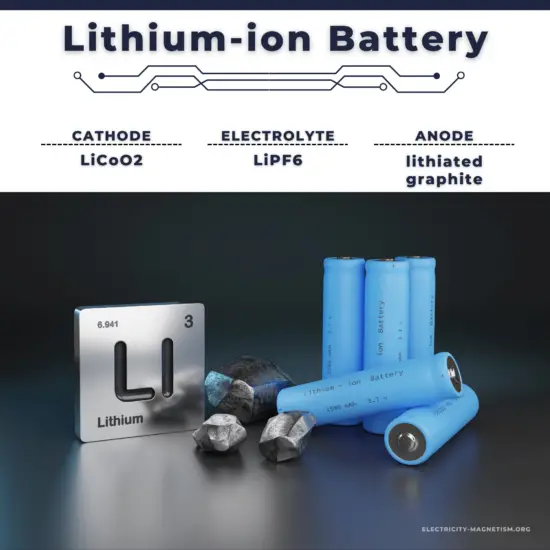Organic diodes are lightweight, flexible electronic devices made from carbon-based molecules, with applications in wearables, solar cells, displays, and bioelectronics.

Organic Diodes: An Introduction to the Future of Electronics
The world of electronics is rapidly evolving, and one exciting area of development is the emergence of organic diodes. These innovative devices promise to revolutionize the way we think about electronics, offering improved performance, flexibility, and sustainability. In this article, we’ll explore the basics of organic diodes, their potential applications, and the challenges that researchers are currently facing in their development.
What is an Organic Diode?
An organic diode is a type of electronic device that is made using organic materials, specifically organic semiconductors. These materials consist of carbon-based molecules, which are arranged in a way that allows them to conduct electricity. Organic diodes are a subclass of organic electronic devices, which also include organic transistors, organic solar cells, and organic light-emitting diodes (OLEDs).
Organic diodes are attractive to researchers and industry leaders alike because they offer several advantages over their traditional inorganic counterparts, such as silicon-based diodes. Some of the most notable benefits include their lightweight and flexible nature, their compatibility with low-cost manufacturing processes, and their potential for reduced environmental impact.
Potential Applications
The unique properties of organic diodes make them well-suited for a wide range of applications. Some of the most promising areas of research and development include:
- Flexible and wearable electronics: The lightweight and flexible nature of organic diodes makes them an ideal choice for the development of wearable electronic devices. They can be integrated into fabrics, which would allow for more comfortable and versatile wearables that conform to the wearer’s body.
- Solar cells: Organic diodes can be used to create organic photovoltaic cells, which have the potential to be more environmentally friendly than traditional silicon-based solar cells. Additionally, their flexibility could enable the development of more adaptable solar panels that can be integrated into various surfaces and structures.
- Displays: Organic diodes are a key component of OLEDs, which are increasingly being used in high-end displays for smartphones, televisions, and other devices. OLEDs offer advantages such as thinner panels, faster response times, and more vibrant colors when compared to traditional LED displays.
- Biomedical applications: Organic diodes have the potential to play a significant role in the development of bioelectronics, which involves the integration of electronic devices with biological systems. Their biocompatibility and flexibility make them ideal for applications such as implantable sensors and drug delivery systems.
Challenges in Organic Diode Development
Despite their many advantages, organic diodes also face several challenges that must be overcome before they can become a mainstream technology. One of the most pressing issues is the relatively low electrical conductivity of organic materials compared to their inorganic counterparts. This results in lower efficiency and slower response times for organic diodes, which can limit their performance in certain applications.
Another challenge is the stability of organic materials. Many organic semiconductors are sensitive to environmental factors such as humidity, oxygen, and temperature, which can degrade their performance over time. This presents a significant hurdle for the long-term durability and reliability of organic diodes and related devices.
Advancements in Material Science and Manufacturing
Researchers are making significant strides in addressing the challenges associated with organic diodes. Advances in material science have led to the development of new organic semiconductors with improved electrical conductivity, stability, and environmental resistance. These materials are paving the way for more efficient and reliable organic diodes that can compete with traditional inorganic devices.
In addition to materials research, progress in manufacturing techniques is also critical for the widespread adoption of organic diodes. Researchers are exploring various methods for producing organic diodes on a large scale, including inkjet printing, roll-to-roll processing, and solution-based techniques. These methods have the potential to enable the cost-effective mass production of organic diodes, further increasing their appeal for both industry and consumers.
Environmental Impact and Sustainability
One of the most significant benefits of organic diodes is their potential for reduced environmental impact. Organic materials are generally less resource-intensive to produce compared to inorganic materials like silicon, which often require high-temperature processes and the use of hazardous chemicals. Furthermore, the lightweight and flexible nature of organic diodes can lead to reduced energy consumption during transportation and installation.
Moreover, some organic materials can be derived from renewable sources, such as plant-based materials, which can further enhance their sustainability credentials. However, it is essential to carefully assess the environmental impact of organic diodes throughout their entire lifecycle, including production, use, and disposal, to ensure their sustainability advantages are fully realized.
Conclusion
Organic diodes represent an exciting frontier in the field of electronics, offering a host of benefits over traditional inorganic devices, including lightweight and flexible form factors, compatibility with low-cost manufacturing processes, and the potential for reduced environmental impact. While there are still challenges to overcome, particularly in terms of material performance and stability, ongoing research and development efforts are bringing us ever closer to realizing the full potential of organic diodes.
As we move forward, we can expect to see organic diodes integrated into a wide array of applications, from wearable electronics and solar cells to displays and biomedical devices. With continued innovation and investment in the field, organic diodes have the potential to revolutionize the way we think about electronics and contribute to a more sustainable future.



